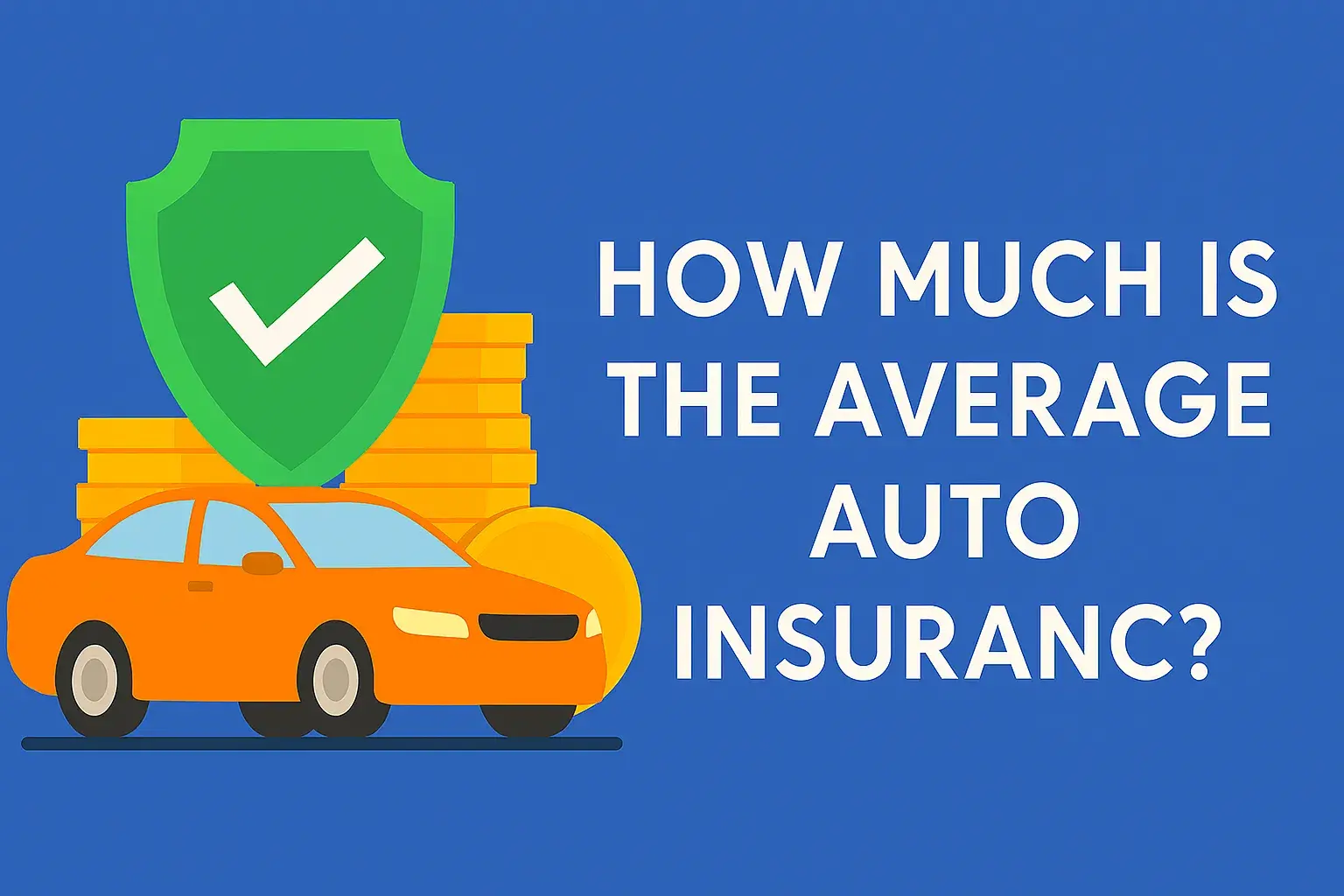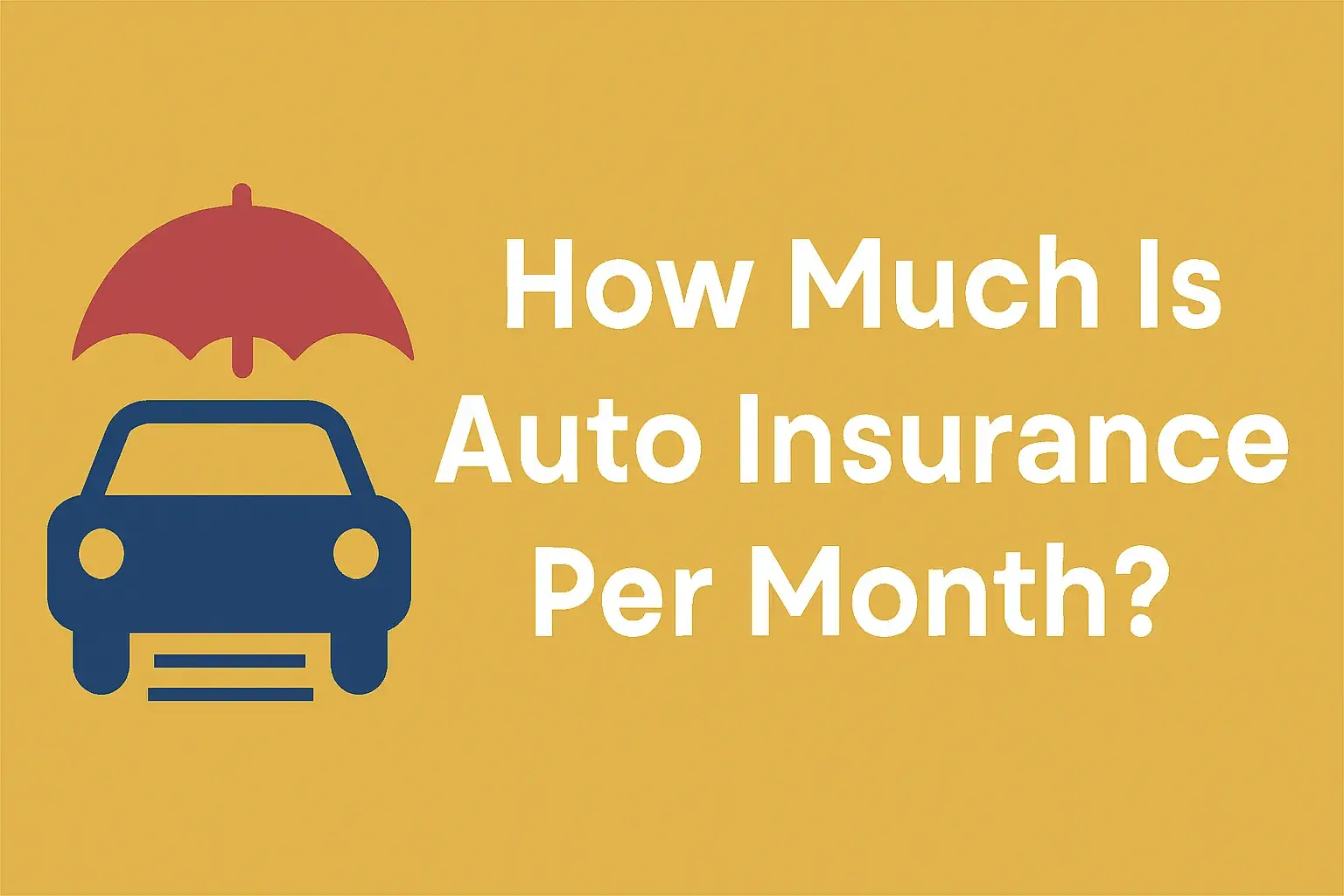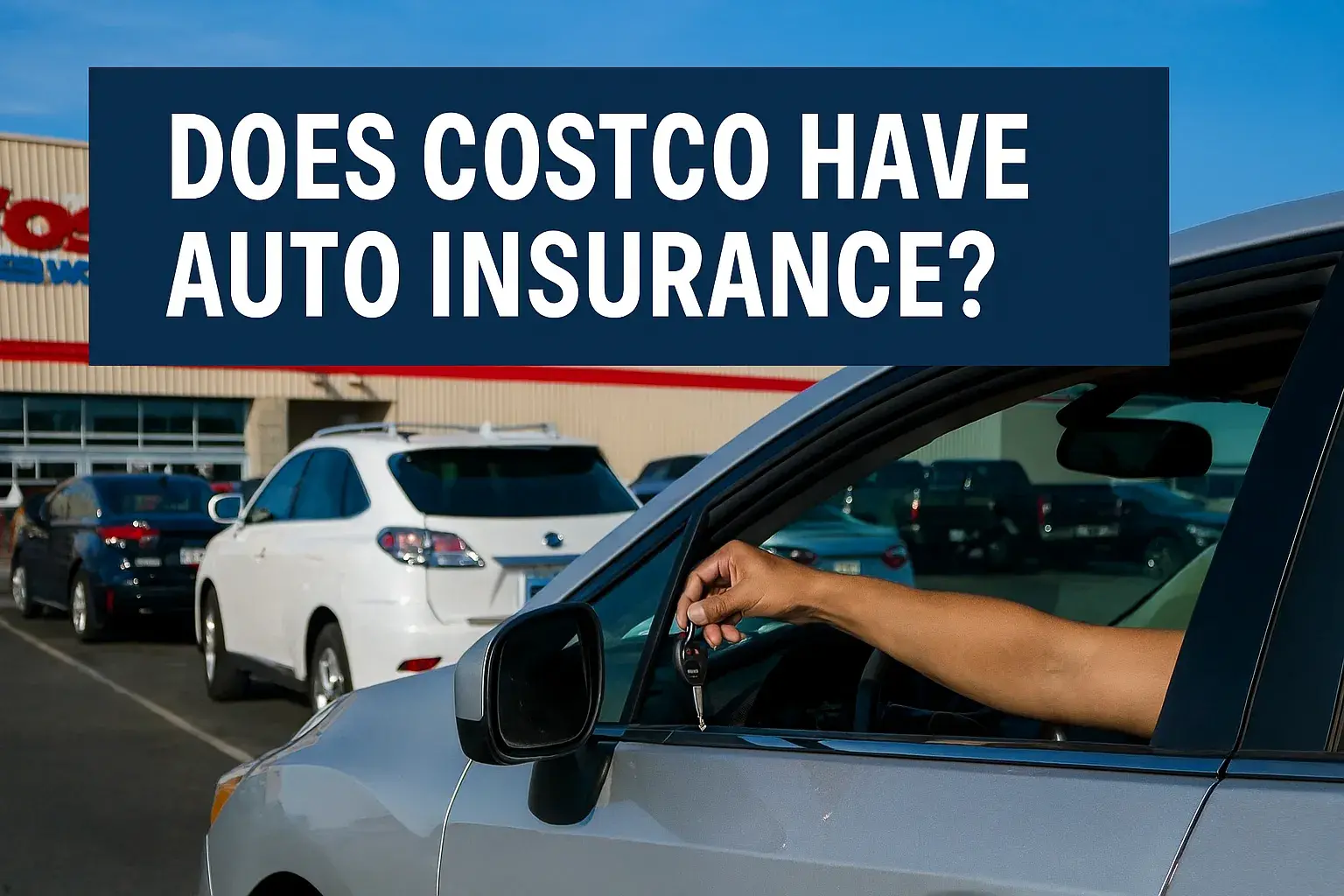11
Sep

You open your mailbox, pull out the familiar envelope from your insurance company, and tear it open with a sense of dread. Then you see it: your new six-month premium. Your heart sinks. “Why is my auto insurance so high?” you ask yourself, frustration mounting. “I’m a good driver! What did I do to deserve this?”
If this scenario feels familiar, you are far from alone. Millions of drivers across the country grapple with rising auto insurance costs. It can feel arbitrary, confusing, and downright unfair. But here’s the secret: insurance companies aren’t just pulling these numbers out of a hat. Your premium is a meticulously calculated number based on a complex algorithm of risk assessment.
In this comprehensive guide, we will demystify that algorithm. We’ll explore the key factors that affect car insurance rates, from the well-known to the obscure. More importantly, we’ll provide you with actionable, expert tips on how to lower auto insurance premiums for good. By understanding the "why," you can take control of the "how much."
Understanding the Auto Insurance Premium: It’s All About Risk
Before we dive into the specific reasons, it's crucial to understand the fundamental principle behind every insurance quote: risk.
Insurance companies are in the business of predicting the future. They use vast amounts of historical data and statistical models to answer one question: "What is the likelihood that this specific driver will file a claim, and how expensive might that claim be?"
Your premium is the price you pay to transfer your financial risk to the insurance company. The higher they perceive your risk to be, the more they will charge you for that service. It’s a simple equation of probability and potential cost. Every data point they collect helps them paint a more accurate picture of that risk.
Top Reasons Why Your Auto Insurance is So Expensive
Let's break down the primary reasons car insurance is expensive for so many people. These are the core factors that carriers weigh most heavily.
1. Your Driving Record and Accident History
This is the most significant factor within your direct control. Your driving history is a direct report card for insurers.
-
At-Fault Accidents: This is a giant red flag. It suggests you may be more likely to cause another costly incident.
-
Traffic Violations: Speeding tickets, reckless driving, DUIs, and other moving violations signal risky behavior. A single ticket can increase your premium by 20-30%, while a major violation like a DUI can more than double it.
-
How a driving record impacts car insurance is immediate and long-lasting. Most companies look back at the last 3-5 years of your driving history.
Real-World Example: *Sarah, a 35-year-old driver with a clean record, pays $1,200 every six months for full coverage. After a minor fender-bender where she was at fault, her next renewal jumps to $1,800. The accident will likely affect her rates for the next three years.*
2. Your Age and Driving Experience
Car insurance cost by age is one of the most dramatic pricing variables. Statistically, inexperienced drivers are far more likely to be involved in accidents.
-
Teen and Young Adult Drivers: High auto insurance for young drivers is the norm. Drivers under 25, especially males, face the highest premiums because claims data show they have the highest accident rates.
-
Senior Drivers: Rates may begin to increase again for drivers over 70, as statistics show an increased risk of accidents due to changing vision and reflexes.
-
Prime Age: Drivers between the ages of 30 and 65 typically enjoy the lowest rates, all other factors being equal, as they are considered the most experienced and lowest-risk.
3. Your Credit-Based Insurance Score
This is a major one that often surprises people. In most states (except California, Hawaii, and Massachusetts), insurers are allowed to use your credit history to create a "credit-based insurance score."
-
Why? Extensive industry research has found a strong correlation between a person's credit history and the likelihood of filing an insurance claim. Those with poorer credit are statistically more likely to file claims.
-
This is not the same as your FICO credit score, but it uses similar information (payment history, amount of debt, length of credit history, etc.). Improving your general credit health can directly lead to lower insurance premiums.
4. Your Location and ZIP Code
Where you park your car overnight is a huge factor. Insurers analyze data at the ZIP code level to assess risk.
-
Urban vs. Rural: Do you live in a dense city? Location plays a key role due to higher rates of traffic congestion, accidents, vehicle theft, and vandalism. A driver in downtown Chicago will pay significantly more than a driver in a rural Iowa town.
-
Your State: State laws and regulations greatly impact cost. No-fault states with higher required personal injury protection (PIP) coverage often have higher premiums. Rates also vary based on the frequency of natural disasters (like hurricanes or hailstorms in your region.
5. Your Vehicle’s Make, Model, and Year
The car you drive isn't just a mode of transport; it's a key data point. Insurers care about:
-
Repair Costs: A luxury car with expensive, imported parts will cost far more to fix than a common sedan with readily available parts.
-
Safety Ratings: Vehicles with high safety ratings and advanced driver-assistance features (ADAS) like automatic emergency braking may qualify for discounts.
-
Theft Rates: Is your car a common target for thieves? Check the Highway Loss Data Institute’s (HLDI) list of most-stolen vehicles.
-
Overall Power: A high-performance sports car invites a different risk profile than a minivan.
Real-World Example: *Insuring a $25,000 Toyota Camry will almost always be cheaper than insuring a $25,000 Ford Mustang. The Mustang is a high-performance vehicle statistically associated with riskier driving and more expensive claims.*
6. Your Coverage Levels and Deductibles
You are directly in control of this one. The more financial protection you buy, the more it costs.
-
State Minimums vs. Full Coverage: Only carrying your state's minimum liability limits is the cheapest option upfront, ut offers scant protection. "Full coverage" (comprehensive and collision) costs more but protects your own vehicle.
-
Lower Deductibles vs. Higher Deductibles: Choosing a low $250 deductible means your insurer pays out more in the event of a claim, so they charge you a higher premium. Opting for a higher $1,000 deductible lowers your premium because you’re agreeing to shoulder more of the initial cost yourself.
7. Rising Market and Repair Costs
Sometimes, a rate increase isn't about you at all. Industry-wide trends are pushing everyone’s premiums up.
-
Inflation: The cost of labor, replacement parts, and rental cars has soared.
-
Advanced Technology: Modern cars are filled with sensors, cameras, and complex electronics. A simple bumper replacement now requires calibrating these expensive systems, making claims far costlier than they were a decade ago.
-
Severe Weather Events: An increase in catastrophic weather events (hurricanes, wildfires, floods) has led to a massive spike in comprehensive claims for totaled vehicles.
Why Young Drivers Pay the Highest Premiums
This factor deserves its own section. If you're a parent with a teen driver, the sticker shock is real. Adding a 16-year-old to your policy can easily double or triple your premium.
Why? The data is brutal. According to the CDC, drivers aged 16-19 are nearly three times more likely to be in a fatal crash than drivers 20 and older. Inexperience, combined with a higher likelihood of distracted and risky driving, makes them the highest-risk demographic.
How parents can help teens save:
-
Good Student Discounts: Most insurers offer significant discounts for maintaining a B average or higher.
-
Driver’s Training Courses: Complete an accredited defensive driving course.
-
Choose the Right Car: Put them in a safe, modest, and inexpensive-to-repair vehicle—not a flashy sports car.
-
Usage-Based Insurance: Consider a telematics program that tracks their driving behavior (see below).
Why Your Insurance Spikes After an Accident or Ticket
An at-fault accident or serious violation like a DUI doesn't just make you feel bad—it officially categorizes you as a "high-risk" driver. Insurers now see you as much more likely to cost them money again in the near future.
In severe cases, you may even be required to file an SR-22 (or FR-44 in some states). This isn't insurance; it's a certificate from your insurer proving you carry the state-mandated minimum liability coverage. It’s required for high-risk drivers and often comes with significantly higher premiums for several years.
Lesser-Known Factors That Affect Your Rate
Beyond the big-ticket items, insurers consider other nuances:
-
Marital Status: Statistically, married drivers tend to file fewer claims than single drivers and often receive lower rates.
-
Annual Mileage: A longer daily commute means more time on the road and a higher chance of an accident. Working from home? Make sure your insurer knows your mileage has dropped.
-
Occupation: Some professions (e.g., architects, scientists) are statistically linked to safer driving habits than others (e.g., waitstaff, delivery drivers).
-
Lapse in Coverage: Letting your insurance policy expire, even for a short period, is a major red flag. It signals financial instability and makes you a riskier client in the eyes of insurers.
How to Lower Your Auto Insurance Costs: Practical Strategies
Now for the good part: how to lower auto insurance premiums. You can’t change your age, but you can take proactive steps to save money on car insurance.
1. Shop Around and Compare Quotes
This is the single most effective action you can take. Loyalty rarely pays in the insurance world. Get quotes from at least three different companies every 2-3 years. Each company's algorithm weighs factors differently, so prices can vary wildly for the same driver.
2. Ask About Every Possible Discount
Insurers offer dozens of car insurance discounts and tips. Don't be shy—ask your agent to do a "discount review." Common ones include:
-
Multi-policy (bundling home and auto)
-
Multi-car
-
Paid-in-full
-
Paperless billing
-
Defensive driving course completion
-
Anti-theft device and safety feature discounts
3. Consider Usage-Based Insurance (UBI)
Programs like Allstate’s Drivewise, Progressive’s Snapshot, or State Farm’s Drive Safe & Save use a telematics device or mobile app to track your driving habits—mileage, braking, speed, and time of day. Safe drivers can earn substantial discounts, sometimes up to 20-30%.
4. Increase Your Deductible
If you have a healthy emergency fund, opting for a higher deductible on your comprehensive and collision coverage is a surefire way to lower your premium. Just ensure you can comfortably afford to pay that deductible if you need to file a claim.
5. Maintain a Clean Driving Record and Good Credit
This is a long-game strategy. Drive defensively and avoid tickets and accidents. Also, work on improving your credit score by paying bills on time and reducing debt. Both actions will pay dividends on your insurance bill.
The Future of Auto Insurance Costs
The industry is evolving. Technology is a double-edged sword: while it makes repairs more expensive, it also introduces new ways to measure risk and reward safe driving. The rise of Electric Vehicles (EVs) presents new challenges (expensive battery replacements) and opportunities (advanced safety tech). Artificial Intelligence will allow for even more personalized pricing. While the core principle of risk assessment will remain, the factors used will become more dynamic and precise.
Conclusion: Take Control of Your Premium
So, “Why is my auto insurance so high?” As we’ve seen, the answer is a complex mix of who you are, what you drive, where you live, and how you behave behind the wheel.
While some factors are fixed, many are within your sphere of influence. You can choose to be a safer driver, to improve your credit, to select a more insurance-friendly vehicle, and, most importantly, to be an informed shopper. Don’t just accept that renewal notice. Use the knowledge from this guide to question it, compare it, and ultimately, lower it.
Your journey to more affordable car insurance starts today.
Frequently Asked Questions (FAQ)
Q: Why is my auto insurance higher than my friend’s, even though we have similar cars?
A: Auto insurance is deeply personal. Your friend may have a better driving record, a higher credit score, live in a safer ZIP code, be a different age, or have a different commute. It’s never an apples-to-apples comparison.
Q: Does a credit score affect car insurance rates?
A: In most states, yes. Insurers use a credit-based insurance score to predict risk. Generally, a higher credit score can lead to lower premiums, while a lower score can result in higher rates.
Q: How much does age affect auto insurance premiums?
A: Dramatically. A 16-year-old can pay three to four times more than a 40-year-old for the same coverage. Premiums generally decrease significantly after age 25.
Q: Why does my car model make insurance expensive?
A: Insurers analyze historical data on your car’s theft rates, repair costs, safety ratings, and overall claim frequency. High-performance, luxury, and frequently stolen vehicles cost the most to insure.
Q: How can I lower my car insurance quickly?
A: The fastest ways are to ask about immediate discounts (e.g., for bundling or paperless billing) and to increase your deductibles. The most impactful way is to shop around with other insurers.
Q: Why did my auto insurance go up for no reason?
A: It likely didn't. If you haven't had a ticket or accident, the increase is probably due to industry-wide trends like inflation and higher repair costs, or a change in your credit score.
Q: Is switching car insurance companies worth it?
A: Absolutely. Shopping around every 2-3 years is the best way to ensure you’re not overpaying. Different companies offer different rates and discounts.
Q: Do speeding tickets always raise insurance rates?
A: Typically, yes. A single minor speeding ticket can increase your premium for several years. The impact depends on your speed, your state's laws, and your insurer's policies.
Q: Can installing safety features lower my premium?
A: Yes. Features like anti-lock brakes, anti-theft systems, and modern Advanced Driver-Assistance Systems (ADAS) like automatic emergency braking can often qualify you for discounts.
Q: How often should I shop for car insurance?
A: Experts recommend getting comparison quotes from at least three different companies every two to three years, or whenever you have a major life change (e.g., moving, buying a new car, getting married).




